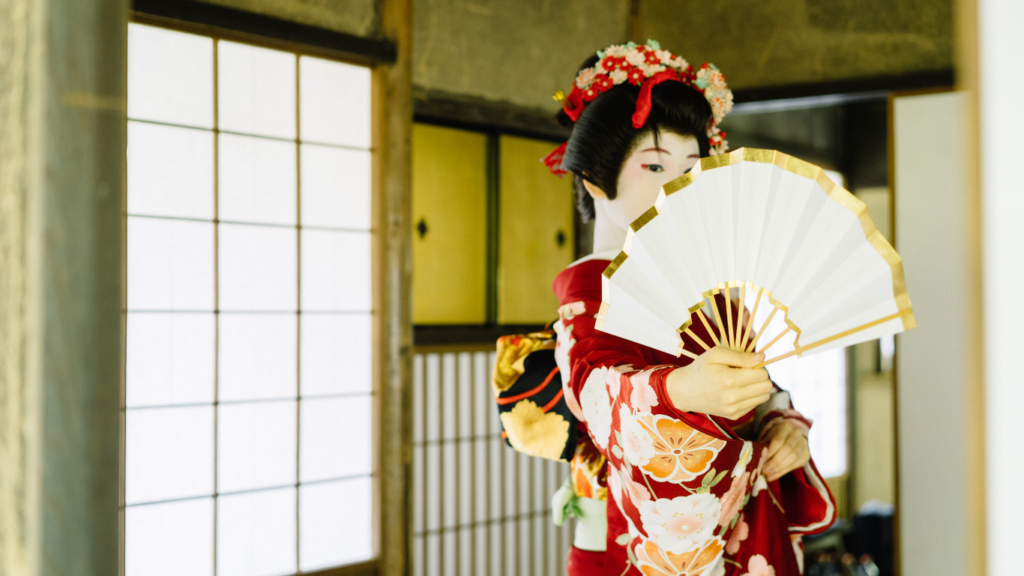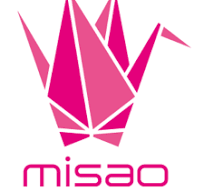The Best Road Trip Routes in India You Need to Explore

The Best Road Trip Routes in India You Need to Explore The Ultimate Guide to the Best Road Trips in India When it comes to travel, few experiences compare to the joy of a road trip. India, with its vast and diverse landscape, offers countless opportunities for unforgettable journeys. From the snow-capped mountains of the north to the serene beaches of the south, a road trip through India is as much about the journey as it is about the destination. In this blog, we will explore some of the most iconic road trips in India, offering you insights and tips to make your journey memorable. Why Choose a Road Trip in India? India is a country of unparalleled diversity. A road trip allows you to experience this diversity up close. You can witness dramatic changes in culture, cuisine, and landscapes as you move from one region to another. Plus, road trips offer the freedom to explore hidden gems, take spontaneous detours, and soak in the local flavor at your own pace. Whether you are an adventure junkie or a laid-back traveler, there is a road trip in India for everyone. Diverse Terrain: From the snowy Himalayas to sandy deserts and lush greenery, India offers unmatched variety. Cultural Richness: Discover the essence of India as you travel through villages, towns, and cities, each with its unique charm. Budget-Friendly: Road trips can be customized to fit every budget, offering an affordable way to travel. Top Road Trips in India You Must Experience Manali to Leh Highway: A Journey to Heaven Distance: Approximately 480 km Best Time to Visit: June to September Highlights: Majestic mountain ranges, pristine valleys, and high-altitude passes like Rohtang La and Baralacha La. Arguably the most iconic road trip in India, the Manali to Leh Highway is every biker and road tripper’s dream. This high-altitude journey offers breathtaking views of the Himalayas and challenges even seasoned travelers with its rugged terrain. Don’t miss stops like Sarchu and Pang for stunning landscapes and starlit skies. Mumbai to Goa: A Coastal Delight Distance: Approximately 590 km Best Time to Visit: October to February Highlights: Scenic coastal views, delicious Konkani cuisine, and vibrant Goan culture. The Mumbai to Goa route, made famous by Bollywood, is a favorite among road trip enthusiasts. The NH66 highway takes you through picturesque towns and lush greenery. Enjoy the journey by stopping at beaches like Ganpatipule and Alibaug for a refreshing break. Golden Triangle: Delhi – Agra – Jaipur Distance: Approximately 720 km Best Time to Visit: October to March Highlights: Historical monuments, vibrant bazaars, and culinary delights. The Golden Triangle is perfect for history buffs and culture enthusiasts. Visit iconic landmarks like the Taj Mahal, Amber Fort, and Qutub Minar while immersing yourself in the rich heritage of India. This route is well-connected and ideal for a comfortable family road trip. Bangalore to Ooty: A Hill Station Escape Distance: Approximately 280 km Best Time to Visit: March to June, September to November Highlights: Serene Nilgiri hills, tea plantations, and charming colonial architecture. This road trip takes you from the bustling city of Bangalore to the tranquil hill station of Ooty. The drive through Bandipur National Park is a unique experience where you can spot wildlife. Once in Ooty, enjoy a peaceful retreat amidst nature. Guwahati to Tawang: An Eastern Adventure Distance: Approximately 520 km Best Time to Visit: March to May, October to November Highlights: Snow-clad peaks, Buddhist monasteries, and vibrant local culture. Explore the mystical beauty of Northeast India with this road trip from Guwahati to Tawang. The journey is as mesmerizing as the destination, with picturesque villages, dense forests, and serene rivers along the way. Tips for Planning Your Road Trip in India Choose the Right Vehicle: Depending on the terrain, opt for a vehicle that ensures comfort and safety. SUVs are ideal for rugged terrains, while sedans are great for highways. Plan Your Route: Research and plan your route in advance, but leave room for spontaneity. Use GPS but also carry physical maps as a backup. Pack Essentials: Carry snacks, water, a first-aid kit, and essential tools like a flashlight and tire repair kit. Stay Updated on Weather Conditions: Weather can vary significantly, especially in mountainous regions. Check forecasts and pack accordingly. Follow Local Guidelines: Be respectful of local customs and regulations. Avoid littering and support local businesses. Budgeting for Your Road Trip A road trip in India can be as budget-friendly or luxurious as you make it. Here are some tips to manage your expenses: Fuel Costs: Calculate the approximate mileage and fuel prices for your vehicle. Accommodation: Opt for budget hotels, guesthouses, or camping for a more economical stay. Food: Enjoy local cuisine at dhabas and roadside eateries for authentic flavors at affordable prices. Entry Fees: Keep a small budget for tolls and entry fees to parks or monuments. Road Safety in India While road trips are thrilling, safety should always be a priority. Here are some safety tips: Avoid night driving, especially in unfamiliar areas. Follow traffic rules and drive within speed limits. Keep emergency contact numbers handy. Take breaks to avoid fatigue during long drives. Conclusion A road trip in India is not just about reaching a destination; it’s about creating memories that last a lifetime. Whether you’re navigating mountain passes, cruising along coastal roads, or exploring the cultural heartlands, every journey has its own story. So pack your bags, hit the road, and discover the magic of India, one mile at a time. Are you ready for your next adventure? Share your road trip experiences and recommendations in the comments below!
Exploring the Richness of Japanese Culture and Traditions: A Comprehensive Guide

Exploring the Richness of Japanese Culture and Traditions Japanese culture, a harmonious blend of age-old traditions and cutting-edge modernity, has fascinated people worldwide. For Indian audiences, its uniqueness and respect for heritage offer a refreshing perspective. Whether you’re a travel enthusiast, a food lover, or someone intrigued by cultural diversity, Japan’s traditions will captivate you. Why Learn About Japanese Culture? Understanding Japanese culture allows us to appreciate its values, history, and contributions to the global stage. It fosters mutual respect and provides valuable lessons in mindfulness, innovation, and community spirit. Appreciating Unique Values:Japanese culture emphasizes harmony, respect, and mindfulness. Understanding these values can inspire personal growth and a fresh perspective on life. Exploring Rich History:Japan’s history is steeped in samurai traditions, imperial dynasties, and ancient art forms. This deep heritage provides insights into their societal structures and global contributions. Planning a trip to Japan? Read our tips for top travel destinations in Japan. Enhancing Cross-Cultural Understanding:For Indians, exploring Japanese culture can highlight similarities and differences, fostering mutual respect and empathy. For example, both cultures deeply value family ties and community celebrations. Adopting Inspirational Practices:Japan’s traditions, such as tea ceremonies and Zen gardens, promote mindfulness and balance, concepts gaining popularity in India as well. Global Relevance:From anime to technological advancements, Japanese culture has a significant global influence. Learning about it helps appreciate its modern contributions and traditional roots. Want to fully embrace Japanese culture? Check out our guide on learning Technology: Japan is a global leader in technology, seamlessly blending innovation with tradition. From advanced robotics and high-speed trains like the Shinkansen to cutting-edge AI and consumer electronics, Japan’s technological advancements have transformed industries worldwide. The country is also a pioneer in sustainable tech, developing solutions for renewable energy and eco-friendly living. For Indian audiences, Japan’s technological innovations are not just marvels of engineering but also sources of inspiration for integrating tradition with modernity. Key Aspects of Japanese Traditions Festivals and Celebrations Japan’s festivals reflect its deep-rooted beliefs and communal harmony. Some notable ones include: Hanami (Cherry Blossom Festival): Celebrating the fleeting beauty of cherry blossoms. Obon: Honoring ancestors through rituals and dances. Gion Matsuri: One of Japan’s most famous festivals, showcasing elaborate floats. Example: Imagine attending Hanami, sitting under cherry blossom trees, enjoying sushi, and sipping sake. It’s a visual and sensory delight similar to enjoying Holi or Diwali in India. Planning to experience these festivals firsthand? Explore our blog on top destinations in Japan. Traditional Arts Japan’s artistic traditions are a testament to its creativity and discipline: Ikebana (Flower Arranging): Symbolizes harmony and balance. Tea Ceremonies: Reflect mindfulness and respect. Calligraphy (Shodo): Combines art and language. Example: Just as rangoli showcases creativity in Indian homes, Japanese calligraphy adorns spaces with elegance. Japanese Cuisine Japanese food is as much about presentation as taste. Popular dishes include: Sushi and Sashimi: A balance of flavors and textures. Ramen: A comforting noodle soup with diverse flavors. Mochi: Sweet rice cakes with various fillings. Example: Similar to how Indian thalis offer a variety of flavors, Japanese bento boxes present a harmonious meal. Discover more about Japanese cuisine in our post on traditional Japanese dishes and recipes. Etiquette and Manners Politeness is a cornerstone of Japanese culture. Common practices include: Bowing as a sign of respect. Removing shoes before entering homes. Using polite phrases like “Arigato” (Thank you). Comparison: Like India’s tradition of touching elders’ feet, bowing shows humility in Japan. Modern Influences on Japanese Culture Japan seamlessly integrates its traditions with modern trends: Anime and Manga: Anime (animated TV shows or films) and Manga (Japanese comics or graphic novels) are more than entertainment; they are integral to Japan’s cultural identity. These art forms reflect the nation’s creativity, storytelling depth, and ability to connect with global audiences. For Indian viewers and readers, Anime and Manga have become a fascinating gateway to understanding Japanese culture. Recommend platforms like Crunchyroll or MyAnimeList to explore Anime shows and Manga series. Learn more about the world of Anime and Manga in our post on Japanese pop culture. Fashion: Japanese fashion is a harmonious blend of traditional elegance and contemporary innovation. Iconic garments like the kimono reflect the nation’s rich heritage, while modern streetwear, influenced by Harajuku and global trends, showcases bold creativity and individuality. Japan’s fashion industry is renowned for its avant-garde designs and sustainability efforts, making it a global trendsetter. For Indian audiences, Japanese fashion offers inspiration in combining cultural identity with modern styles, similar to India’s mix of traditional and contemporary attire. Explore how Japanese culture influences modern styles in our blog on Japanese fashion trends. Technology: Japan is a global leader in technology, seamlessly blending innovation with tradition. From advanced robotics and high-speed trains like the Shinkansen to cutting-edge AI and consumer electronics, Japan’s technological advancements have transformed industries worldwide. The country is also a pioneer in sustainable tech, developing solutions for renewable energy and eco-friendly living. For Indian audiences, Japan’s technological innovations are not just marvels of engineering but also sources of inspiration for integrating tradition with modernity. Similarities Between Indian and Japanese Cultures Family Values: Both cultures emphasize family bonds and respect for elders. Festivals: Celebrations often involve food, rituals, and community gatherings. Spiritual Practices: Meditation and mindfulness play significant roles in both cultures. How to Experience Japanese Culture from India Food Festivals in Japanese Culture Japanese food festivals are vibrant celebrations of the nation’s culinary heritage, showcasing regional specialties, seasonal ingredients, and traditional cooking techniques. Ramen Expo: Dedicated to Japan’s iconic noodle dish, this festival highlights unique ramen styles from different regions. Sapporo Snow Festival: Known for its incredible ice sculptures, it also features food stalls serving warm bowls of miso ramen and grilled seafood. Tsukiji Market Festival: A paradise for seafood lovers, this event offers fresh sushi, sashimi, and tuna cutting shows. For Indian audiences, these festivals offer a similar experience to India’s food melas, combining food, culture, and community bonding. They’re perfect for exploring the diversity of Japanese cuisine and the artistry behind each dish. FAQs
Misao Japanese Language Institute: Your Gateway to Mastering Japanese in India

Misao Japanese Language Institute: Your Gateway to Mastering Japanese in India Expert Japanese Language Courses holds significant global importance, especially with Japan’s influence on technology, culture, and business. For people in India, learning Japanese language n Culture offers various opportunities for career growth, travel, and cultural exchange. One of the best places to start your journey in mastering Japanese is Misao Japanese Language Institute. At Misao, we provide a structured and easy-to-follow learning experience designed for beginners to advanced learners. Whether you’re looking to understand anime better, secure a job with a Japanese company, or even explore Japan’s rich cultural heritage, Misao Japanese Language Institute offers a pathway to achieving your goals. Why Learn Japanese Language in India? India has become a hub for international businesses, and many Japanese companies have set up operations here. From automotive giants like Toyota and Honda to tech companies like Sony and Panasonic, the demand for individuals who are proficient in Japanese is rising. Additionally, Japanese culture, including anime, manga, and traditional arts, has a strong fan base in India. Learning the language opens up opportunities for cultural immersion and communication with native speakers, and get a chance to go to Japan ,allowing you to enjoy Japanese media in its original form. Job Opportunities: Japanese companies are increasingly hiring professionals who speak Japanese. Cultural Exchange: Enjoy Japanese movies, anime, and literature in their original form. Travel: With a good grasp of the language, you can travel Japan and communicate with locals comfortably. Global Networking: Speaking Japanese opens doors to connect with people from Japan and around the world. Career Opportunities with Japanese Language Proficiency in India Jobs in Japanese Companies: As Japan expands its footprint in India, the demand for Japanese-speaking professionals is growing. These jobs often offer attractive salaries and career progression. you get chance to go to japan and get chance to work in Japan. Translation and Interpretation: Many companies seek Japanese translators or interpreters, especially those dealing with Japanese clients or partners. Tourism & Hospitality: Japan’s tourism industry is growing, and there is a growing demand for professionals who can assist Japanese tourists visiting India. What Makes Misao Japanese Language Institute Unique? Learn Japanese Culture at Misao Japanese Language Institute: Immerse Yourself in Tradition and Language Introduction: If you’re passionate about learning the Japanese language and immersing yourself in authentic Japanese culture, the Misao Japanese Language Institute is the perfect place for you. At Misao, you’ll not only master the language but also experience the richness of Japan’s traditions, arts, and customs. Whether you’re a beginner or looking to refine your skills, this institute offers an immersive environment that brings the Japanese language and culture together in one dynamic learning experience. Discover Japanese Culture Through Language: Language learning goes beyond vocabulary and grammar—it’s about understanding the people, traditions, and history behind the words. Misao Japanese Language Institute offers a unique curriculum that combines language lessons with cultural activities, helping you connect deeper with the heart of Japan. Key Features of Misao Japanese Language Institute: Comprehensive Language Courses: Misao offers courses for all levels, from beginners to advanced students. These courses are designed to improve your speaking, listening, reading, and writing skills, all while exploring the nuances of Japanese culture. Cultural Immersion Programs: At Misao, the focus is not only on learning the language but also on embracing cultural aspects like tea ceremonies, traditional calligraphy (shodo), Japanese festivals, and local cuisine. These programs help you practice the language in real-life settings, making learning a more holistic experience. Expert Instructors: The instructors at Misao are native Japanese speakers with years of teaching experience. They bring a deep understanding of Japanese culture to the classroom, ensuring that students receive both a linguistic and cultural education. Language Exchange Opportunities: Misao promotes language exchange between students and local Japanese speakers. This allows learners to practice Japanese in a real-world context and build meaningful connections with people from different walks of life. Modern Facilities with a Traditional Touch: Misao’s classrooms are equipped with modern teaching tools, while the décor reflects Japan’s rich cultural heritage. This blend of the contemporary and traditional creates an inspiring environment for learning. For more information click on this link https://misao.co.in/home Courses Offered at Misao Japanese Language Institute Misao japanese language institute offers a range of courses catering to learners at all levels, from absolute beginners to advanced learners preparing for the Japanese Language Proficiency Test (JLPT). can check on Misao website Beginner Courses Our beginner courses are designed for students who have no prior knowledge of Japanese. We start with the basics—hiragana, katakana, and simple sentence structures. By the end of this course, you’ll be able to read, write, and converse in basic Japanese. What You’ll Learn in Japanese Language: Hiragana and Katakana: Learn Japan’s phonetic scripts. Basic Vocabulary: Greetings, common phrases, and essential vocabulary for daily conversations. Simple Sentence Construction: Forming basic sentences using present tense, questions, and negative sentences. Cultural Insights: An introduction to Japanese customs and etiquette. Example: A beginner might start by learning how to introduce themselves in Japanese:“こんにちは、私はアナです。日本語を学んでいます。” (Konnichiwa, watashi wa Ana desu. Nihongo o manandeimasu.)Translation: “Hello, I am Ana. I am learning Japanese.” Intermediate Courses Once you’ve mastered the basics, our intermediate courses help you refine your skills and introduce more complex grammatical structures. You’ll start using past tense, future tense, and conditionals to express ideas more fluently. What You’ll Learn: Kanji Characters: Introduction to Kanji (Chinese characters used in Japanese writing). Grammar Expansion: Learning how to use more complex structures like “もし~たら” (if-then) and “~ながら” (while doing). Conversation Skills: Handling real-life scenarios like ordering food, asking for directions, and making polite requests. Example: “もし天気が良ければ、公園に行きましょう。” (Moshi tenki ga yokereba, kōen ni ikimashou.)Translation: “If the weather is good, let’s go to the park.” Advanced Courses Our advanced courses are designed for learners who aim to become fluent in Japanese. These courses are ideal for students preparing for the Japanese Language Proficiency Test (JLPT) or professionals who wish to improve their Japanese for business purposes. What
